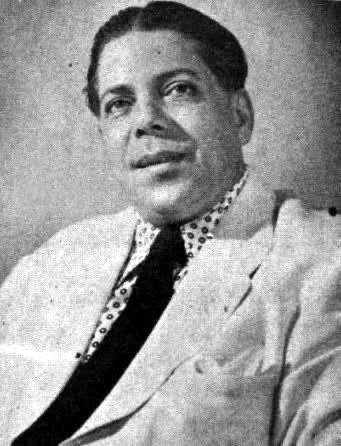Anthony Stanislaus de Mello was one of India’s greatest sports administrators
Anthony Stanislaus de Mello: Fast Facts * Co-founded the BCCI in 1928, served as its secretary (1928–1938) and president (1946–1951),
* Co-founded the BCCI in 1928, served as its secretary (1928–1938) and president (1946–1951),
* Was founder-president of Asian Cricket Conference in 1948
* Was driving force behind founding of Cricket Club of India (CCI) in Bombay, and creation of iconic Brabourne Stadium
* Introduced the Ranji Trophy
* Was organising chairman of the first Asian Games (New Delhi, 1951)
* Founded the Table Tennis Federation of Asia, also served as vice-president of the International Table Tennis Federation
* For over 7 decades (from 1951-52 till 2023-24), the 'Anthony de Mello Trophy' was awarded to the winner of England–India Test cricket series held in India
For THE GOAN
Amid the frosty relationship between the Board of Control for Cricket in India (BCCI) and the Pakistan Cricket Board (PCB), not many may remember that nearly a century ago, the BCCI was founded largely due to the efforts of a Goan who was born and educated in Karachi.
Anthony Stanislaus de Mello (October 11, 1900 – May 24, 1961) was a visionary administrator, a pioneer, and one of the greatest unsung architects of modern cricket.
De Mello, who traced his roots to Sonarbhatt-Saligao, studied at St Patrick’s High School, Karachi, was influenced by the school’s legendary educational and sporting traditions.
SHAPING CRICKET
He went on to become one of India’s greatest sports administrators and the co-founder of the BCCI in 1928. Serving first as the BCCI secretary (1928–1938) and later as its president (1946–1951), de Mello built the framework of an institution that today commands unimaginable power, prestige, and financial might in the world of sport. He was also the founder-president of the Asian Cricket Conference in 1948.
De Mello’s vision stretched far beyond the BCCI’s headquarters. He was also the driving force behind the founding of the Cricket Club of India (CCI) in Bombay and the creation of its iconic Brabourne Stadium.
De Mello also introduced and organised India’s national cricket championships—the Ranji Trophy—which remains the bedrock of Indian cricket. This single innovation created a platform that nurtured thousands of players, produced cricketing legends, and transformed India into a factory of world-class talent.
BEYOND CRICKET
De Mello’s contributions weren’t limited to cricket. He was the organising chairman of the first Asian Games (New Delhi, 1951) and earlier of India’s National Games (Bombay, 1950).
In his article ‘The doyen of Indian cricket’, Church historian the late Fr Nascimento Mascarenhas from Saligao stated that de Mello had founded the Table Tennis Federation of Asia and was vice-president of the International Table Tennis Federation, even organising the 19th World Table Tennis Championship at Brabourne Stadium in 1952.
De Mello also modernised Delhi’s transport system, leaving behind a civic legacy that touched millions. In 1959, he authored ‘Portrait of Indian Sport’, a landmark work reflecting his deep engagement with India’s sporting culture.
ENDURING LEGACY
Though he played 11 first-class matches, his true genius was institution-building.
Thanks to his groundwork, the BCCI has grown into the richest and most influential cricket board in the world, a powerhouse at the International Cricket Council (ICC), and is reshaping the global cricket economy.
De Mello’s legacy endures in every Ranji match, every iconic Test at the Brabourne, its successor the Wankhede Stadium, and every time the BCCI flexes its global muscle.
An incredible achievement by a Karachi Goan—one whose name deserves to be remembered wherever the story of Indian cricket is told.
Incidentally, for over 7 decades (1951-52 to 2023-24), the 'Anthony de Mello Trophy' was awarded to the winner of the England–India Test cricket series held in India. This tradition changed only this year when it was decided by the England and Wales Cricket Board (ECB) and the BCCI to name the Test series between England and India the Anderson-Tendulkar Trophy.
In his article, Fr Mascarenhas stated that de Mello “had visualised a “big stadium for the land I love, Goa, when freedom comes, and a pavilion for my dear youth in the village of my ancestors, Saligao.” But that was not to be. He died in May 1961, before he could give concrete shape to his dream.”
BROTHER’S SELFLESS ACT
My former Karachi neighbour and fellow historian Fausto D'Sa noted from London that while Anthony de Mello was indeed a great man, what is not known is the selfless act of his older brother, Roque, who also studied at St Patrick’s High School, Karachi, and went on to graduate from Cambridge University in 1916, aged 23.
“He was returning home on the ship ‘SS Maloja’ at the height of World War I, and this ship was torpedoed off the coast of Dover. It is said he offered his place on the lifeboat to a woman passenger and perished,” stated D’Sa.
(The writer is a Toronto-based communications consultant, Karachi Goan community/city historian and author.)
Photo Courtesy: Menin Rodrigues